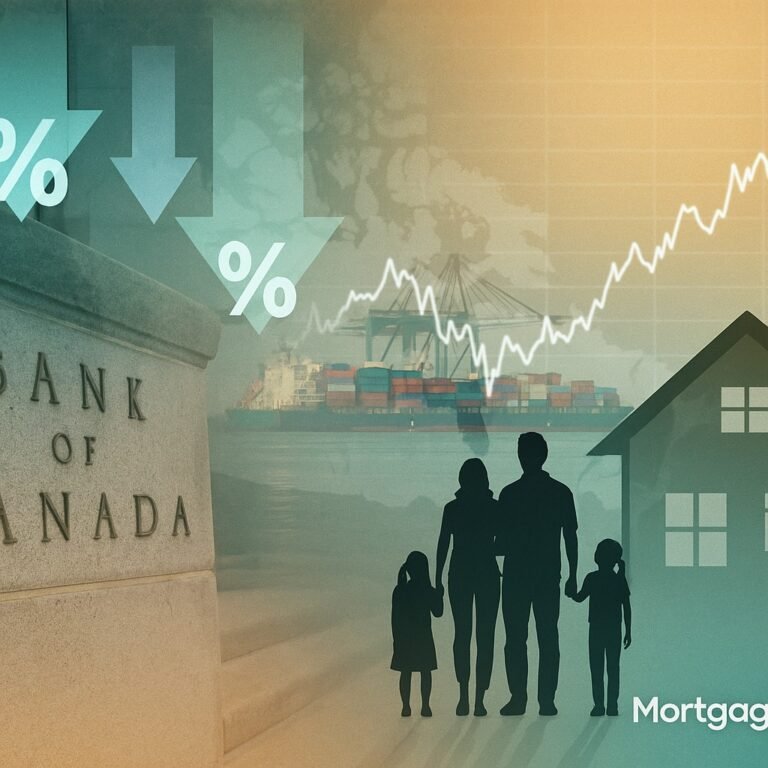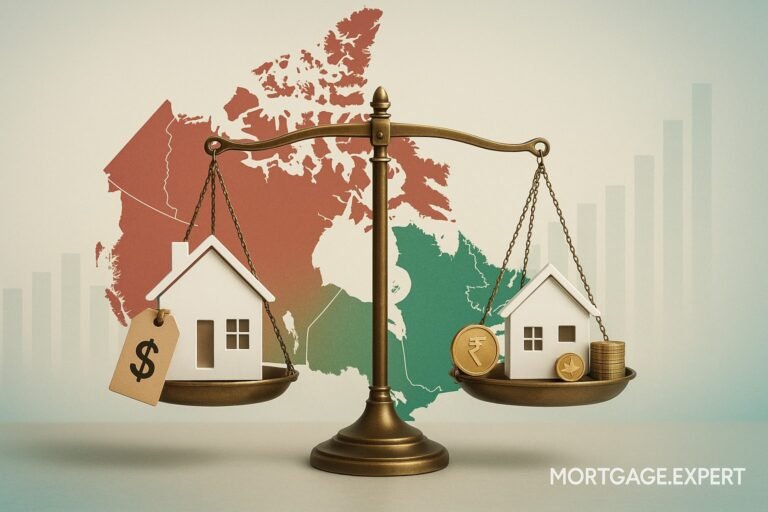
Variable Mortgage Snapshot: 3-Year ~5.25%, 5-Year ~4.42%
On October 1, 2025, Canadian borrowers faced 3-year variable mortgage averages of 5.25% and 5-year terms near 4.42%. The unusual gap reflects market expectations of further Bank of Canada cuts. We explain why the 5-year is cheaper, what it means for renewals, and the risks ahead.
Toronto | Oct 2, 2025 — Canadian borrowers leaning on floating-rate mortgages are watching closely as national averages show 3-year variable/adjustable terms at ~5.25% and 5-year variables near 4.42%. The figures come less than two weeks after the Bank of Canada trimmed its overnight rate by 25 bps to 2.50%, a move designed to ease financing conditions amid slowing growth.
How Variable Rates Are Set
Variable and adjustable mortgages in Canada are tied directly to lenders’ prime rates, which themselves track the central bank’s overnight rate. As of Oct 1, most major lenders’ prime sits around 4.70%. Discounts or premiums off prime then determine what individual borrowers pay. For example, a “prime – 1.25%” 5-year variable translates to 3.45% today, while a “prime + 0.50%” 3-year adjustable comes out at 5.20%. The national averages—5.25% for 3-year and 4.42% for 5-year—reflect the middle ground across lenders and borrower profiles.
Why the 5-Year Variable Is Cheaper
It may seem counterintuitive that the longer 5-year variable term is averaging lower than the 3-year option. The reason lies in market expectations. Bond traders and swap markets are pricing in further BoC cuts through 2026 as the economy slows, especially after Canada’s September PMI fell to 47.7, showing contraction. Lenders anticipate lower prime rates over the medium term, so they can afford to offer deeper discounts on longer variables to attract borrowers.
What Borrowers Are Experiencing
For households that took on variables during the 2020–21 low-rate cycle, today’s averages still sting. Monthly payments on adjustable-rate mortgages (where payments reset with prime) are hundreds of dollars higher than two years ago. For static-payment variable borrowers, amortization has ballooned, with some contracts showing extended terms beyond 40 years unless lenders reset at renewal. The BoC’s September cut has eased the pressure slightly, but average rates remain well above pre-2022 norms.
Risks and Rewards of Going Variable
Borrowers considering a new mortgage face a classic trade-off:
- Pros: If the BoC delivers more cuts in 2026, variable borrowers will feel the benefit sooner than fixed-rate holders. Monthly payments could gradually fall, offering relief without refinancing. Historically, variables have outperformed fixed rates over long cycles, though not without pain in tightening periods.
- Cons: Payments can climb again if inflation flares back up. Even a pause in rate cuts means carrying costs remain elevated, which can strain cash flow. For homeowners near their debt-service thresholds, this risk may outweigh the potential savings.
Renewal Wave Ahead
Industry analysts note that hundreds of billions in Canadian mortgages are set to renew in 2025–26. Many borrowers who locked in ultra-low fixeds in 2020–21 will face sharply higher rates at renewal. Some may consider switching to a variable, hoping BoC easing accelerates. Others may prefer shorter fixed terms, balancing predictability with flexibility. The availability of 5-year variables at lower average rates than 3-year terms could tempt switchers, but only if their household budgets can withstand near-term volatility.
By the Numbers
- 3-year variable/adjustable: ~5.25% (↑ 5 bps week-over-week)
- 5-year variable/adjustable: ~4.42% (↑ 2–5 bps week-over-week)
- Prime rate reference: ~4.70%
- BoC overnight rate: 2.50% (cut Sept 17)
- Canadian PMI (Sept): 47.7, signalling contraction
Outlook: More Relief or Just Stability?
Markets are betting on another 25–50 bps of BoC easing into early 2026, especially if weak factory output spreads into broader sectors. If realized, today’s variable borrowers could see gradual payment relief. But fixed-income strategists caution that if inflation proves sticky or global oil shocks return, the easing cycle could stall.
For now, the message is balance: variables offer potential for savings if the economy slows as expected, but households should budget for bumps. With 3-year variable averages higher than 5-year, the market is signalling confidence in a longer-term rate decline—but not without risks along the way.
Considering a Variable Rate Mortgage?
Compare 3-year and 5-year variable offers with expert help and see if you can benefit from future Bank of Canada cuts.
Get Personalized Help NowStuck with a Mortgage Decision?
Don’t stress — our team is here to help. Reach out for free, no-obligation guidance.
Contact the Experts



